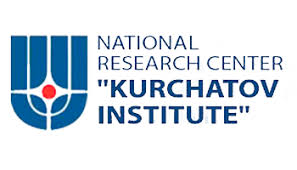Many of the existing four hundred plus commercial nuclear power reactors in the world are reaching or have reached the end of their original forty-year licenses life span. Some of them are going to be shut down and others are applying for or have been granted extension of their legal life span. As reactors age, their concrete and steel deteriorate, and maintenance becomes more and more expensive. There is a lot of research around the world on the question of how to safely and economically extent reactor life spans.
Russia is aggressively pursuing nuclear technology for internal power generation and external exports not to mention for nuclear weapons development. Scientists from the R and students from the National Research Nuclear University are collaborating on research on new technology to extend the service life of their popular VVER-440 commercial power reactors by up to forty five years. They published their work in the Journal of Nuclear Materials.
The Russian VVER-440 is the most popular commercial nuclear power reactor in the world. The water-water energetic reactor vessel is one of the most import parts of a nuclear power plant. It could be said that the safety and operating efficiency of the reactor vessel virtually defines the level of safety at a nuclear power plant.
The components of an operating nuclear power plant are subjected to fast neutron exposure. This results in radiation hardening which is a loss of plasticity in the base metals in the components due to radiation-induced defects phase at the nanoscale.
The combination of radiation and temperatures of almost six hundred degrees Fahrenheit cause impurity elements to differentiate at the boundaries of the grains in the matrix of the metal alloy. This, in turn, results in reduced crack resistance in the component.
This reduction in crack resistance limits the safe lifespan of a reactor. The probability of a brittle fracture occurring when a reactor vessel is flooded by cold water in case there is an emergency where the core has to be quickly cooled. In 1991, Russian scientists carried out a “recovery annealing process” on some VVER-440 reactor vessels which extended their service life by up to forty-five years.
The recover annealing process was developed and patented at the Kurchatov Institute. It requires that a reactor vessel be heated to and baked at different temperatures in a series of phases. Samples are cut from the inner surface of a functional VVER-440 and subjected to comprehensive studies, re-annealing and then studying the samples.
A professor at MEPhI's Institute of Nuclear Physics and Engineering said, “It is essential to conduct this procedure so we can give recommendations on further extending the service life of the reactor vessel and determine the rate of post-annealing radiation embrittlement.”
"Conducting re-annealing with this technology results in the dissolution of radiation-induced precipitation and defects as well as grain boundary segregations," Kuleshova stated. “This leads to the restoration of the original properties and structures of the base metals, increasing their service life. That is why we need to know more about the structure and mechanical properties of the reactor vessel base metals at different stages in their lifespan, including after re-annealing.”
Researchers involved in this annealing program said that in order to extend service life by sixty years, there would need to be a second round of recovery annealing after carrying out preliminary studies on the structure and mechanical properties of the base metals in the reactor vessel. This would take place after an annealed reactor vessel had been in operation for a long time.
This research project required the use of modern high-resolution analytical techniques including transmission and raster electron microscopy, atom probe tomography and Auger electron spectroscopy. In order to ascertain the amount of radiation embrittlement in the metals, there were mechanical tests on static tension and impact bending.
“The participation of MEPhI students in this research showcases the connection Russian students have with real science and the economy, which allows them to work on scientific developments and solve large-scale problems while they are still studying at the university. This increases their knowledge and competence levels and benefits the country's economy.”
